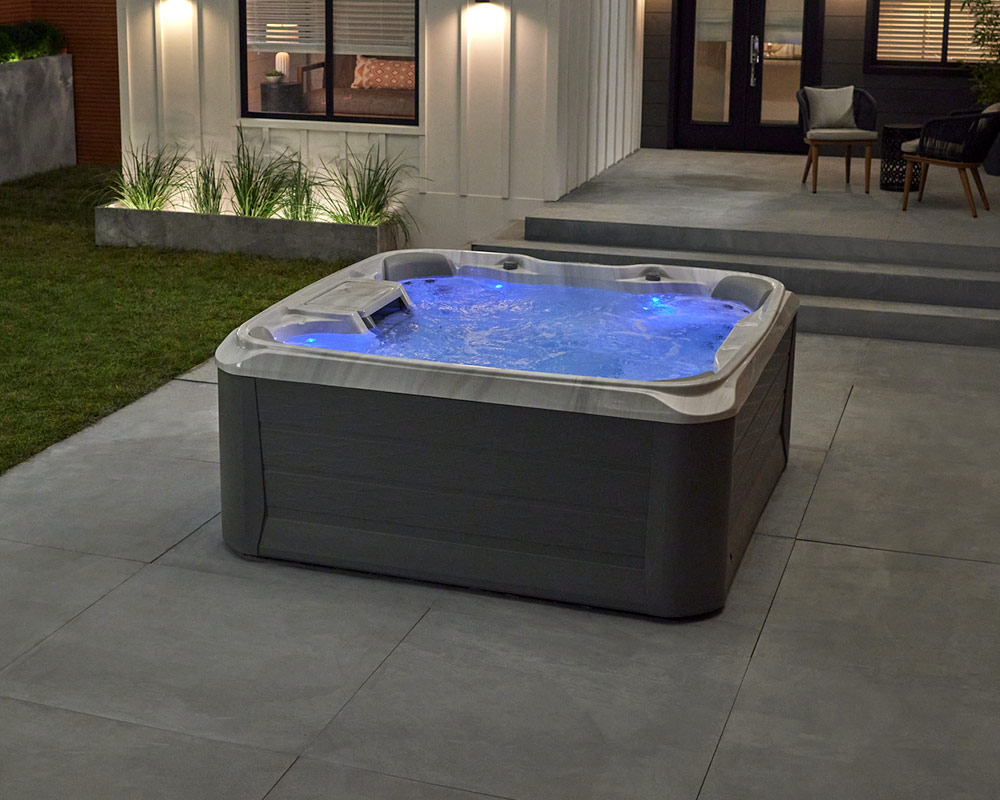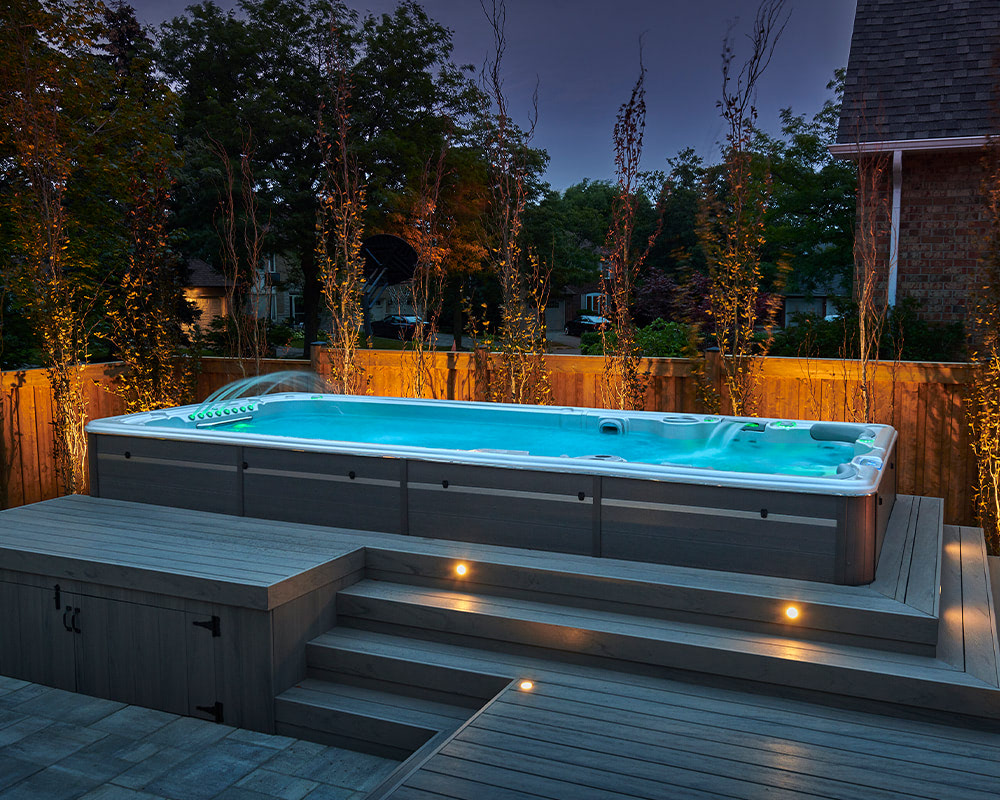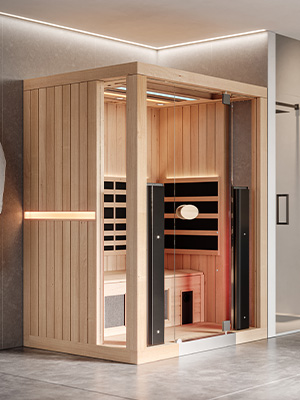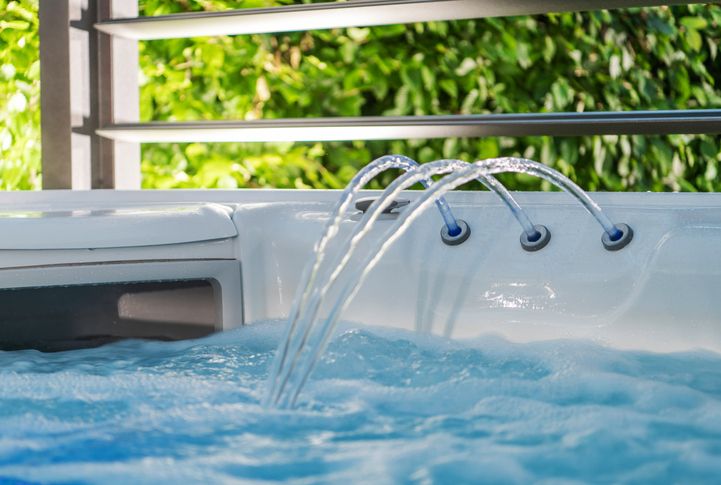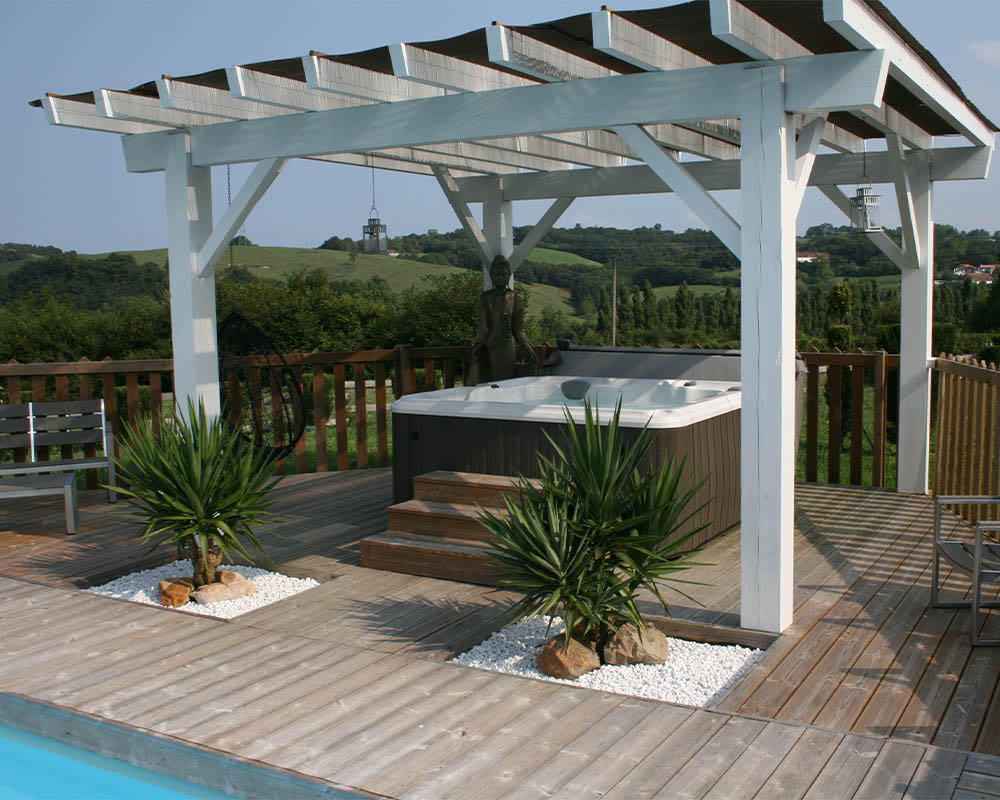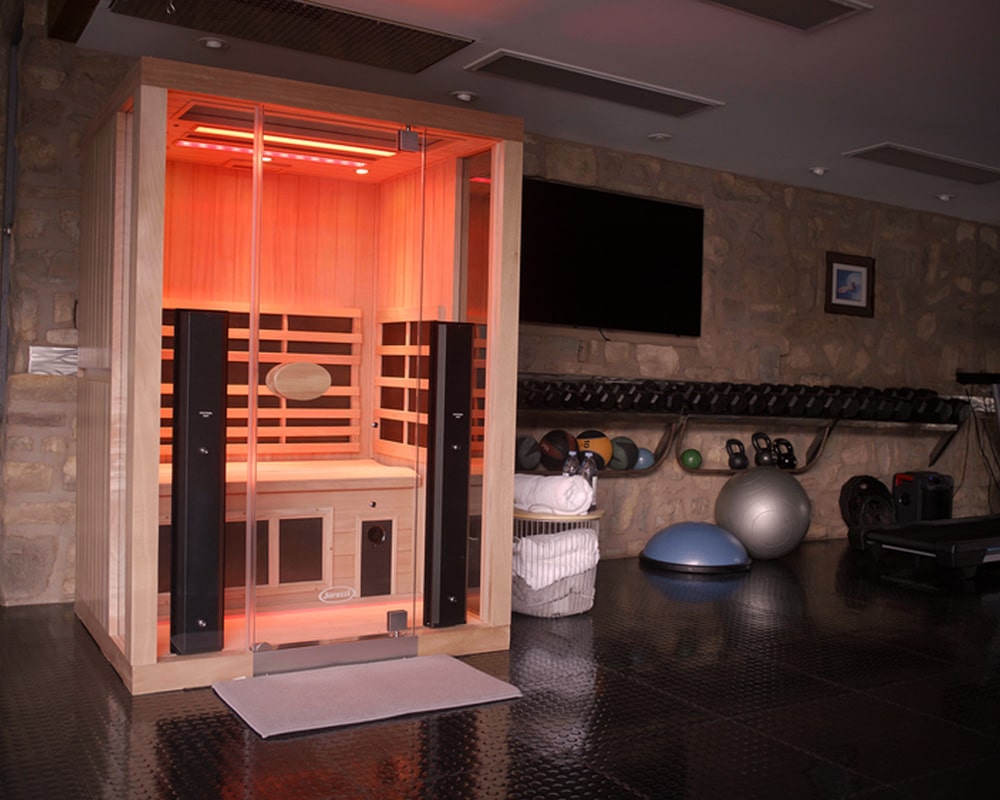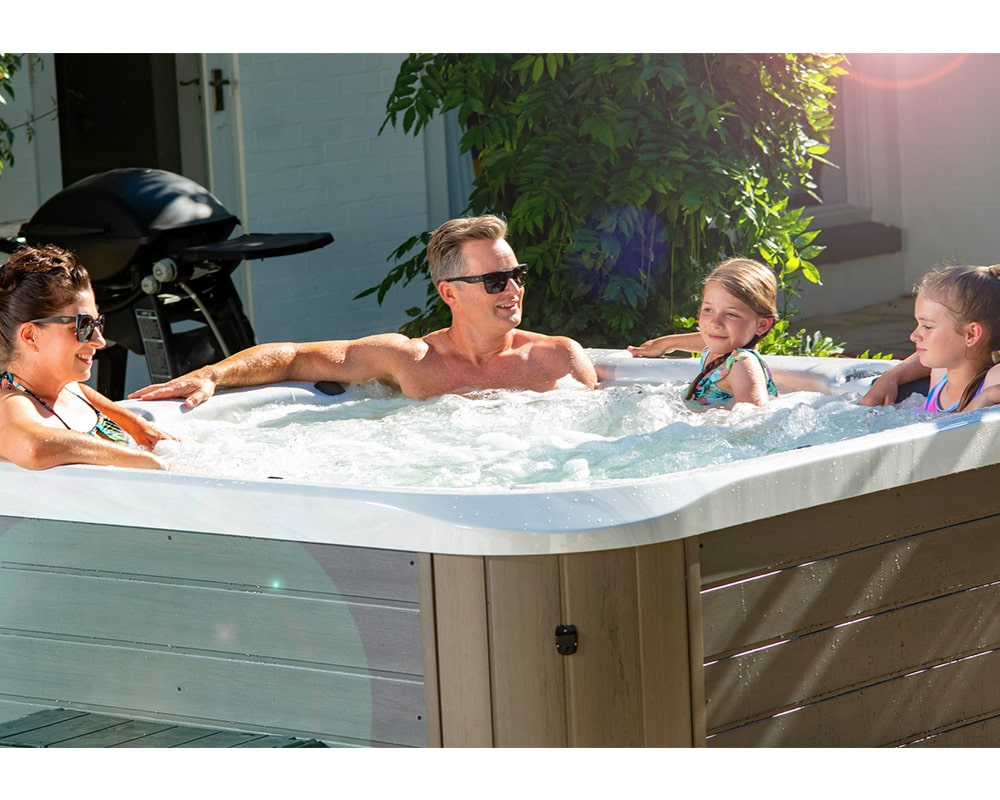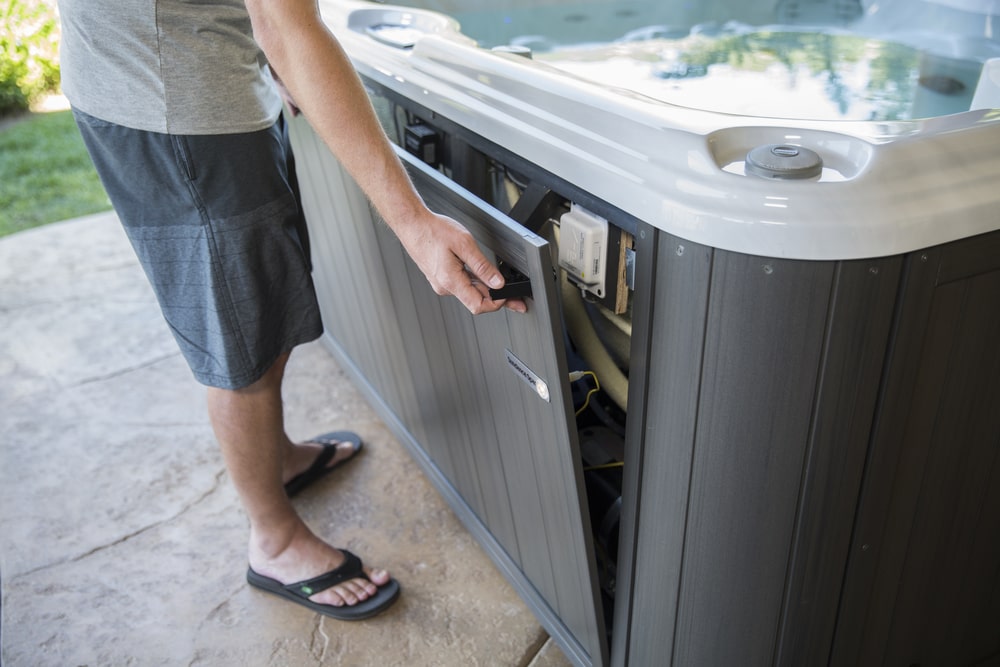Hot tubs have an impressive lifespan, and while that could mean up to 20 years of relaxation bliss, it also means occasional hot tub repairs at one time or another.
As with anything, the parts in your hot tub will inevitably wear down and need to be replaced or repaired.
Your water maintenance routine will have a heavy influence over the types of issues you experience, how often they occur, and how pricy those repairs are.
When it comes to the health of your hot tub, you’ll need to know what signs to watch for to know when your hot tub is in distress and know exactly how to respond to each one.
While some issues you can repair yourself, others will require a professional, and it’s also vital to your spa’s health to know when it’s time to schedule a hot tub service appointment.
In this article, we’ll cover each of these aspects, as well as answer the age-old question: “is my hot tub worth fixing?”
Keep reading to learn how to perform hot tub repairs like a pro.
In This Article:
- Signs Your Hot Tub Needs Repair
- 5 DIY Hot Tub Repairs
- When to Call The Professionals
- Tips to Minimize Hot Tub Repairs
- Is it Worth Fixing Your Hot Tub?
Signs You Need Hot Tub Repair
Knowing when your spa is struggling will help you catch issues early and save a substantial amount of money on hot tub repairs over the years.
Over time, you’ll develop a strong understanding of how your hot tub functions day to day and learn how it changes when issues arise. Most often, this is through its water.
Some of the most common signs your hot tub needs repairs include:
- Frequently dirty water
- Foul smelling water
- Poor water pressure
- Loud noises coming from your pump
- Cold water
- Error codes on your control panel
- Consistently low water levels
While some signs are more noticeable than others, it’s vital to be aware of any change your hot tub is experiencing and consider why that might be happening.
5 Easy DIY Hot Tub Repairs
Hot tub repairs don’t always have to be done by a professional, and while we certainly recommend leaving the big ones up to the experts, some more common ones can be tackled solo.
1. Dirty Water
Dirty water is a common hot tub issue that every spa owner has experienced at one time or another, and can take a few different forms:
- Algae blooms
- Cloudy water
- Foam on the surface
These can be caused by various things, so it may take some time to determine what exactly the root cause is.
However, with a few steps, you’ll know if it’s something you can fix or if you need to schedule a service appointment.
The first thing you’ll want to do is test your water to get an accurate reading of its chemistry.
Oftentimes, dirty water is simply a reflection of unbalanced chemistry, such as your pH, alkalinity, or sanitizer levels being too high or low.
After you’ve tested your water, treat it with the appropriate chemicals, let your hot tub run uncovered, and retest after 30 minutes.
2. Clogged Filters
Clogged filters are another common issue and can warn you they need to be cleaned by creating dirty water or reducing your water pressure.
If your water chemistry is balanced when you test your water, your filters are the next thing to check.
Remove them from your hot tub, and rinse off any debris under gently running water.
If they have a particularly thick layer of grime, spray them with a filter cleaner and let them soak for 15 minutes before rinsing them off again.
After they’re cleaned, you’ll want to inspect them for any damage.
Rips or tears in their pleats can result in dirty water because they’re no longer able to effectively strip the debris out.
If they’re damaged, replace them with new ones immediately.
If, however, they are still in good condition, let them dry and return them to your spa.
3. Low Jet Pressure
If you’ve settled in for a soothing deep tissue massage only to be disappointed when you turn on the jets and little (or nothing) happens, you likely have an airlock in your water lines.
This happens most often after a water change.
To fix this,
- Open your jets completely
- Turn them on for 15 seconds at a time, alternating between low and high pressure
- Continue doing this until the water pressure has returned to normal.
This will help flush out the air that’s trapped in the line.
If this doesn’t work, check the filters to ensure they’re not clogged.
If all else fails, schedule a service appointment.
4. Temperature Fluctuations
While temperature fluctuations can certainly be felt if they’re extreme enough, your system may also warn you by displaying COOL or OH to signal your water temperature has dropped below the threshold or become too hot.
If your control panel warns you that your water temperature hasn’t been stable, it’s time to check your system.
This can be caused by a few different things:
- Dirty filters
- An overactive pump
- Temperature changes outside
- A damaged heating element
- A clog in your circulation system
Check each of these aspects and note any changes that may have occurred since your last inspection (which should have been at most a month prior).
If your filters are the culprit, clean them as mentioned above.
If your pump has been running more often than usual, you may have a circulation issue, which will require you to drain your spa and flush your lines.
If your outside temperature has seen recent highs or lows, you may need to adjust your water temperature to reflect that (warmer if it’s been colder, cooler if it’s suddenly hotter outside).
If your heating element is damaged, either through corrosion or scale buildup, you can either replace the element yourself or buy a new heater.
5. A Whining or Growling Pump
Over time, you may notice your pump begin making loud noises, generally sounding like a high-pitched squeak or a deep growl.
This doesn’t necessarily mean your pump needs to be replaced. It may just need some gentle care.
Squealing generally happens when the bearings in your pump become too dry. Often if you add some lubricant, they’ll begin moving properly again, and the noise will subside.
If it’s growing, it often means it doesn’t have enough water, which can be caused by blockages or a low water level.
To fix this, check your water levels and top them up as necessary, and inspect your pump for any blockages, such as scale buildup and clear it out.
Know When To Call The Professionals
Keeping your hot tub running smoothly is essential to maintaining your spa’s health long-term, and knowing when it’s time to call the professionals is a vital part of that.
Certain issues can signal disastrous problems looming on the horizon if not caught and managed right away, and these aren’t one’s you’ll want to take on by yourself.
If you’ve discovered any of these three issues, schedule a service appointment as soon as possible.
1. Your Water Levels Keep Dropping
While some evaporation is normal, if you’re finding you’re having to top up your hot tub’s water more frequently than normal, it could be the first sign of a water leak somewhere in your system.
2. You Discovered a Leak
Leaks can quickly become big problems if not caught and managed right away.
If you’ve discovered an unexpected puddle around your spa or near your system, scheduling a service appointment immediately can help save you from potential damage spreading and expensive hot tub repairs in the near future.
3. Your Water Won’t Stay Clean
If you’ve been trying to clean your water and simply can’t, even after a water change, it’s time to call in the experts.
This can happen when there’s an issue in your system or simply through your city water being particularly difficult to balance.
Having a service technician come out can help catch any potential issues or give you a chance to see firsthand the best way to balance your water based on its unique needs.
Tips to Minimize Hot Tub Repairs
While hot tub repairs are inevitable, you have an important role in how often they are needed.
Here are some of the best ways to ensure your hot tub repairs are kept to a minimum over the years.
- Maintain your water chemistry
- Stick to a hot tub maintenance routine
- Inspect your system monthly
- Don’t skip steps
- Pay attention to your spa
- Be proactive; include professional hot tub service in your regular routine!
Is It Worth It To Fix My Hot Tub?
If your hot tub is a high-quality model and is under 12-15 years old, you should definitely take the necessary steps to try and repair it when issues arise.
If the repairs needed are extensive or your hot tub is coming up on the end of its expected lifespan, it’s likely your best option to consider upgrading to a new one.
Ultimately, the choice is yours!
Hot Tub Repairs Are Part of The Process
Your hot tub system is constantly surrounded by chemically treated water, which will ultimately result in repairs needing to be made over time.
While they should generally be few and far between if you’ve been taking good care of your spa and maintaining its water chemistry, nothing will guarantee they never occur.
When you take a proactive approach by properly maintaining your spa and watching for signs of distress, you can minimize the risk of expensive repairs in the future.
Hot tub repairs like fixing low water pressure, cleaning your filters, and maintaining your pump are all tasks you can take on yourself. However, larger issues, such as potential leaks, should be handled by professionals.
Hot Tub Repair & Service in Boise
Whether you’re in the market for a hot tub upgrade or need to schedule a hot tub service and repair, the experts at Idaho Spas are here to help.
We carry top-of-the-line spas and offer a range of service solutions to help make caring for your hot tub simple. We’ve even opened an online store to make stocking up on all your hot tub supplies fast and easy.
If you’re struggling with your spa, request a service appointment online, or contact us today, and we’ll get your spa back up and running in no time.
